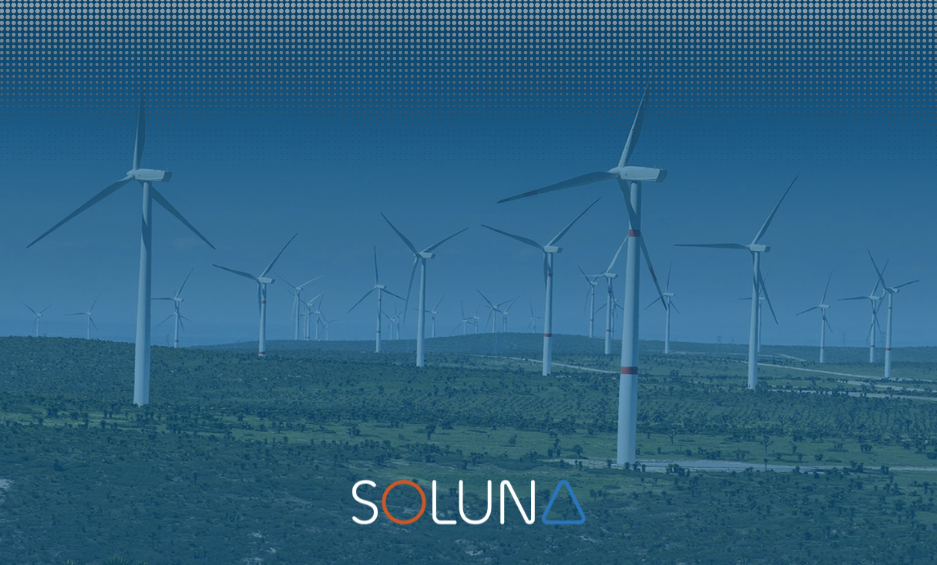by John Belizaire, CEO
My name is John Belizaire, and I am the founder and CEO of Soluna Computing, a developer of green data centers for cryptocurrency mining and other batchable computing.
Perhaps the most important point I will make here today is to turn the conventional narrative on its head and consider that crypto’s energy consumption is a feature, not a bug.
The reality is that if we execute well, computing can be a catalyst for growth in clean energy — a crucial component to meeting our goals of pollution reduction AND rural job creation.
And you in this room have the ability to shape policies that can encourage more sustainable cryptocurrency, deter bad actors and redefine our thinking regarding what grid infrastructure should look like.
I am a technologist and an entrepreneur. I sold my first start-up company when I was 28 years old. I have had the honor of helping to shape major technology waves in established industries.
Today, I am the CEO of Soluna Computing, which builds modular data centers on-site at clean power plants to repurpose energy that would otherwise go to waste. We buy this “curtailed energy,” as it’s called, from renewable power plants and convert it into clean, low-cost global computing. Our data centers process jobs that can help discover new drugs, provide security to new digital assets, or enable your home assistant to play your favorite song — all batchable and compute intensive.
The journey that led me here started in Morocco, where my colleagues and I were developing a project to harvest one of the best wind resources in the world. We were having difficulty developing the project because the grid wasn’t ready to accept the magnitude of power that our wind farm would produce. In our research to find a solution for this problem, it occurred to us that computing and the blockchain is the perfect, immediately deployable solution to absorb this excess clean energy. Once we identified this solution, we realized it was unlikely we were the only people to have this challenge.
Curtailed energy, it turns out, is a nearly universal problem in clean energy development.
Up to 30% of clean power generated on solar and wind farms can be curtailed — or wasted — which decreases the profitability of these power plants. Curtailed energy is a problem in the United States because our grid is inflexible. It is based on a legacy architecture of equalizing supply and demand, and it’s not designed to handle the volume of clean energy that is in the pipeline.
When I think about where the world is headed with regard to energy, it’s pretty clear we’re all in the equivalent of a fast-moving Tesla at this point. Nobody’s likely driving the car, by the way. We’re all chatting, going at high speeds into the future of clean, renewable energy. In my view, we’ve been headed in this direction since the beginning of the pandemic in 2020.
The question is: Will we limit ourselves to just batteries and transmission as the only solutions to enable us to make this transition?
They’re both important, and storage technologies are being developed and scaled at a rapid pace. But transmission is a long-distance goal that will be met over long-term execution. We need more immediately available solutions. And that is where cryptocurrency mining and batchable computing comes in.
Today the Bitcoin protocol serves as a crucible for the wealth and financial freedom of hundreds of millions of people.
At the heart of this protocol is the process for protecting this new digital asset, known as proof-of-work. While the cryptocurrency mining process can be compared to a lottery, it is not. The mining process is central to the security system for Bitcoin’s blockchain ledger and other cryptocurrencies. The miners are searching for a special combination of characters that encodes the new block in a permanent way. So it would take an infinite amount of computing and energy for a bad actor to change the blockchain in their favor.
This computing-intensive process is not a waste.
The energy used to perform the computation provides irrefutable proof that a participant earned the right to validate a new block, add it to the chain, and earn a reward. The entire system is designed to encourage participants to protect the network rather than attack it.
Another important feature about cryptocurrency mining is the fact that you can hit the “pause button” on the computing. There is a misconception that all the machines in these data centers must run 24/7, adding permanent load to a grid system and stealing energy from other consumers. While I will admit that does happen, it is not required. In fact, after the devastating storms in Kentucky last year, we at Soluna joined other industrial energy users in volunteering to shut down our systems to reduce load on the damaged grid.
The ability to start and stop, or pause computing processes, allows us to introduce a new type of load to the grid — flexible load. This flexible load can help increase grid resilience by absorbing excess energy from renewable resources that provide more power than the grid can handle.
We see crypto and computing as part of the solution to one of the biggest problems in the renewable energy industry.
At Soluna, we have three data centers built near grids with heavy hydro power. Right now we are mining bitcoin, and we are expanding our capabilities to include other applications, like processing data for research scientists, running code for AI, or crunching the numbers that are generated by your Peloton. I like to tell my friends, our data centers may not be streaming your Netflix, but they can help determine which show gets suggested as the next one you might want to watch.
Every week, I talk to developers of clean power projects: Independent Power Producers looking to build wind farms and solar farms. Here’s what they tell me, and what their views say about the marketplace.
First, they are all worried about revenue. The grid is so congested that their investment returns are uncertain because of high levels of curtailment.
Second, I’m not the first bitcoin miner they’ve spoken to, which tells me that clean power developers are beginning to view data centers like ours as a path to additionality. In other words, our data centers are the catalyst for building a clean power plant that wouldn’t otherwise get built.
Computing is a better battery.
Computing is an immediately deployable solution that can allow renewables to scale to their full potential today. What would be tragic is if clean energy power plants don’t get built because our grid is so outdated that it can’t take on enough clean energy.
Building in technologies like green data centers can allow renewables to scale, meet their full potential to create jobs, and drive economic activity in struggling rural areas.
We must not underestimate how quickly new technology can overtake its perceived value. It has happened time and time again. Bitcoin is a powerful innovation that hasn’t yet reached its Zenith. It took the internet 20-years to do so. Most of it happened in the last decade.
Whenever there’s a new big technology wave, you’re going to have good actors and bad actors. We saw that before. We saw some pretty questionable activity on the Internet, but imagine how different life would be if it had been shut down completely.
As you learn more about the blockchain and cryptocurrency, I encourage you to zero in on the opportunity. You are in a position to shepherd that transition to cleaner computing and a sustainable blockchain.
I encourage you to think about how computing technology can help improve the flexibility of the grid, accelerate the renewable energy transition and boost our global competitiveness. The place to focus is on what we can do to deter the bad actors in the industry from using anything other than cleanly produced electricity.
It’s time to expand beyond conventional thinking when we look at upgrading our grids. I’d welcome legislation that incorporates computing, along with transmission and batteries, into grid infrastructure. We also need more grid-scale programs that encourage flexible-load solutions like these.
Thank you again for the invitation to testify before this important subcommittee.



